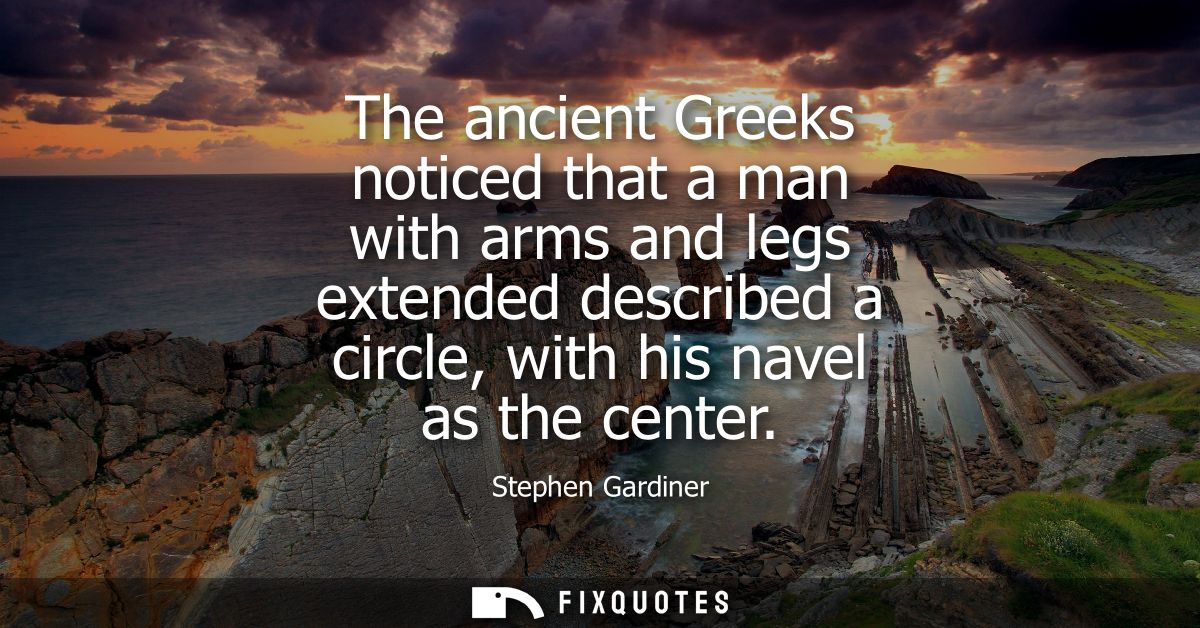"The ancient Greeks noticed that a man with arms and legs extended described a circle, with his navel as the center"
About this Quote
Stephen Gardiner’s observation alludes to the enduring interplay between mathematics, art, and the human body, rooted in the intellectual curiosity of the ancient Greeks. Their fascination with geometry and proportion shaped not only their temples and sculptures, but also their philosophical understanding of the world and human beings’ place within it. By recognizing that a person, standing with arms and legs outstretched, could trace the outline of a perfect circle around their body, with the navel as the central point, they unearthed a profound connection between human anatomy and the geometric forms underpinning the cosmos.
This insight encapsulates the search for harmony and order. The circle, revered as a symbol of perfection, continuity, and unity, becomes intertwined with the living form; the navel’s central location represents not merely a physical midpoint, but a conceptual origin from which life radiates and finds balance. When artists like Leonardo da Vinci created the Vitruvian Man, they inherited and celebrated this tradition, using the same principle to explore the mathematical ratios embedded in nature and the human frame.
For the Greeks, geometry was not abstract calculation alone, but a language to express the ideal. By mapping the body onto a circle, they declared that the macrocosm, the universe, reflects itself in the microcosm, the human being. The body’s symmetry, balance, and proportion mirrored the rational order they saw in the heavens and in harmonious architecture. This melding of physical observation with geometric imagination elevated humanity’s understanding of itself, nourishing centuries of inquiry into anatomy, aesthetics, and design. In short, the simple act of outstretching limbs becomes a gesture of unity with the grand patterns of existence, a visual and philosophical testament to the harmony between man and universe championed by ancient Greek thought.
About the Author

